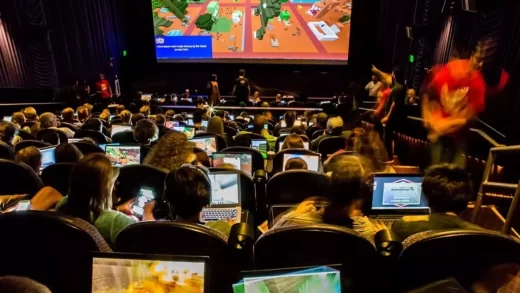In this article, we’ll explore the fascinating convergence of gaming and theater, two seemingly distinct forms of entertainment that have found common ground in recent years. The blend of digital and live experiences has given rise to innovative and immersive productions, captivating audiences in unique ways.
Table of Contents
- Introduction
- The Evolution of Gaming
- The Magic of Theater
- Where the Worlds Collide
- The Birth of Immersive Theater
- Interactive Storytelling
- Gaming Technologies in Theater
- The Role of VR and AR
- Breaking the Fourth Wall
- Case Studies: Successful Productions
- Challenges and Controversies
- The Future of Gaming and Theater
- Conclusion
- FAQs
Introduction
Gaming and theater, though seemingly distinct, share a common goal: to captivate and engage their audience. The intersection of these two worlds has given rise to a new form of entertainment that combines the best of both. In this article, we’ll delve into how gaming and theater have evolved and merged, creating immersive experiences that push the boundaries of storytelling.
The Evolution of Gaming
Gaming has come a long way from its pixelated beginnings. With advancements in technology, games have evolved into complex narratives with stunning graphics and intricate gameplay. This evolution has allowed gamers to become active participants in virtual worlds, making choices that impact the outcome of the story.
The Magic of Theater
Theater, on the other hand, has always relied on the power of live performances to connect with the audience emotionally. The immediacy and intimacy of the stage create a unique bond between actors and spectators. The magic of theater lies in its ability to convey raw human emotions in real-time.
Where the Worlds Collide
The convergence of gaming and theater occurs when the interactivity of gaming meets the live performances of theater. It’s a delicate balance that requires careful planning and execution. The result is a form of entertainment that draws the audience into the narrative like never before.
The Birth of Immersive Theater
Immersive theater takes the audience on a journey where they are no longer passive observers but active participants. In productions like “Sleep No More,” audience members can explore multiple rooms, interact with actors, and choose which parts of the story to follow. This blurring of lines between performer and spectator is a hallmark of immersive theater.
Interactive Storytelling
Both gaming and theater are centered around storytelling. In this new hybrid form, interactive storytelling takes center stage. Audience members may influence the plot’s direction, making each performance a unique experience. This level of engagement keeps viewers on the edge of their seats.
Gaming Technologies in Theater
To create these immersive experiences, theater productions are incorporating gaming technologies. Lighting, sound effects, and projections are used to transport the audience to different worlds. These elements enhance the storytelling and create a multisensory experience.
The Role of VR and AR
Virtual Reality (VR) and Augmented Reality (AR) are pushing the boundaries of gaming and theater even further. With VR headsets, audience members can step into a virtual world and interact with the characters. AR overlays digital elements onto the real world, adding layers of complexity to the live performance.
Breaking the Fourth Wall
Traditional theater often adheres to the “fourth wall” concept, where actors don’t acknowledge the audience’s presence. In contrast, immersive theater breaks down this barrier, encouraging interaction between performers and spectators. This creates a sense of intimacy and connection.
Case Studies: Successful Productions
Several productions have successfully blended gaming and theater. “Punchdrunk’s” “The Drowned Man” and “Sleep No More” are notable examples. These shows have garnered critical acclaim for their innovative approach to storytelling.
Challenges and Controversies
The fusion of gaming and theater is not without its challenges. Some purists argue that it dilutes the purity of both art forms. There are also concerns about the overreliance on technology and the potential for distractions.
The Future of Gaming and Theater
The future looks promising for the intersection of gaming and theater. As technology continues to advance, we can expect even more immersive and interactive productions. This fusion opens up new avenues for creativity and audience engagement.
Conclusion
The convergence of gaming and theater has given birth to a thrilling form of entertainment that pushes the boundaries of storytelling. As these two worlds continue to intersect, audiences can look forward to more captivating and immersive experiences.
FAQs
1. Are there any famous actors involved in immersive theater productions?
Yes, some well-known actors have participated in immersive theater, adding to the allure of these productions.
2. How can I experience immersive theater for myself?
Many major cities have immersive theater productions. Check local listings and websites for upcoming shows.
3. Are immersive theater experiences suitable for all ages?
It depends on the production. Some may contain mature themes, so it’s essential to check the content before attending with younger audiences.
4. Is VR necessary to enjoy immersive theater?
VR is not always necessary, as some productions rely on physical sets and interactions. However, it can enhance the experience in certain cases.
5. What is the best way to prepare for an immersive theater experience?
Wear comfortable clothing and be prepared to engage with the performers and the environment. Leave expectations at the door and embrace the unpredictability of the experience.














